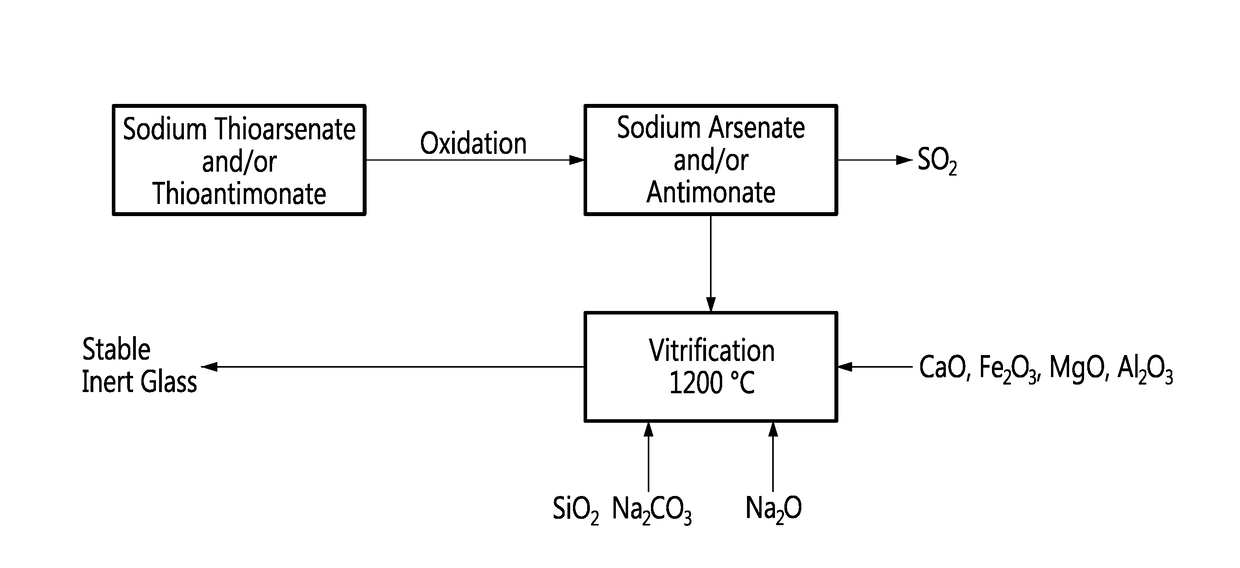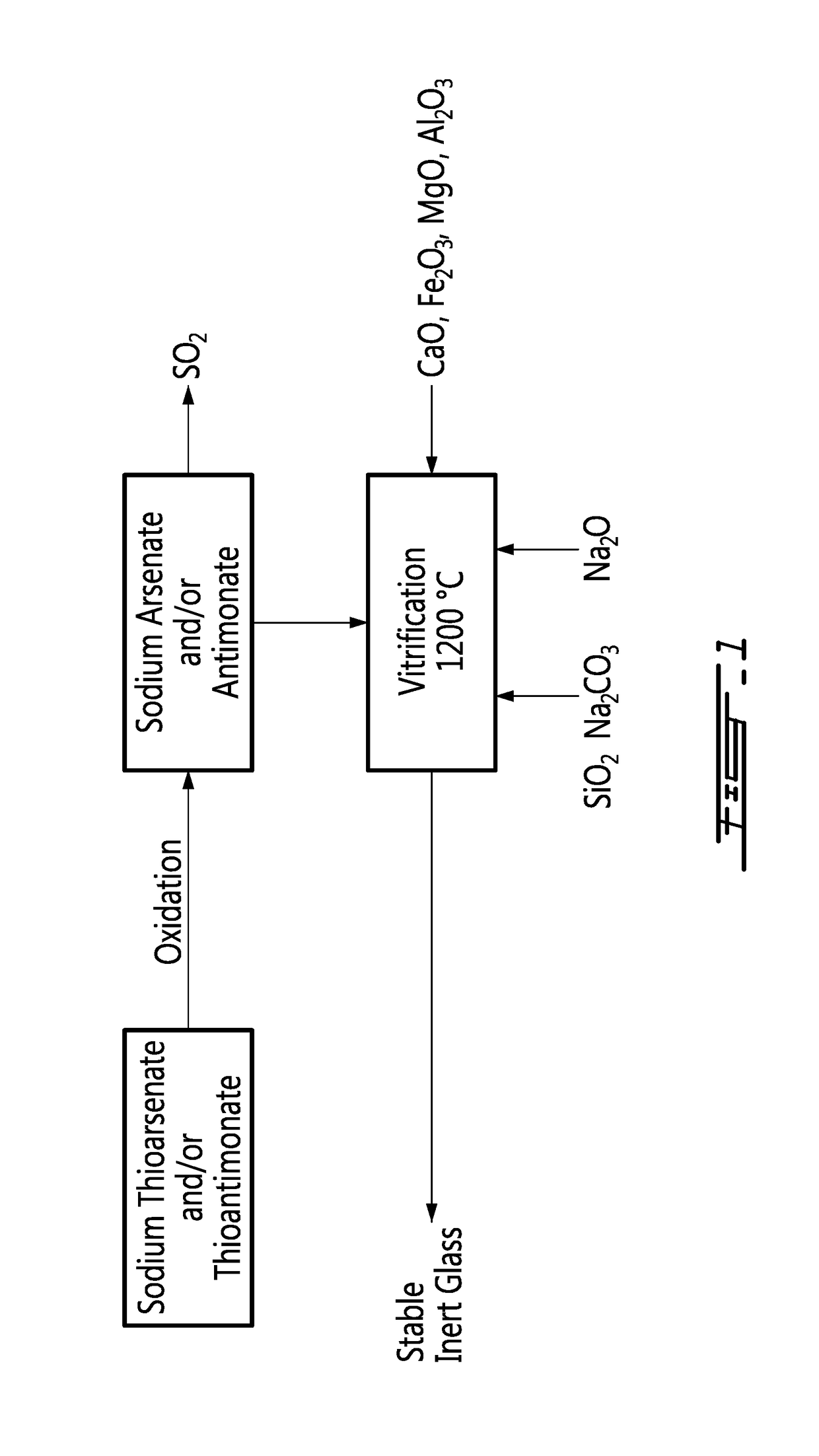Method for vitrification of arsenic and antimony
a technology vitrification method, which is applied in the field of arsenic and antimony storage, can solve the problems of inorganic compound being vulnerable to potential leaching, and affecting the treatment effect of arsenic and antimony
- Summary
- Abstract
- Description
- Claims
- Application Information
AI Technical Summary
Benefits of technology
Problems solved by technology
Method used
Image
Examples
Embodiment Construction
[0013]The present invention is illustrated in further details by the following non-limiting examples.
[0014]The method according to an embodiment of an aspect of the invention is described in relation to the flowchart of FIG. 1.
[0015]Arsenic and antimony exist as thiosalts, i.e. thioarsenate (Na3AsS4) or thiantimonate (Na3SbS4) respectively, when crystallized from basic dissolution with sodium sulfide Na2S.
[0016]These thiosalts are oxidized in order to substitute oxygen to sulfur on the arsenic and the antimony, by air or oxygen, at a temperature in a range between about 200° C. and 400° C., with evolution of sulfur dioxide SO2, as shown by the following relations:
Na3AsS4+6O2→Na3AsO4+4SO2 (1)
Na3SbS4+6O2→Na3SbO4+4SO2 (2)
[0017]The resulting sodium arsenate (Na3AsO4) and sodium antimonate (Na3SbO4) respectively can then be incorporated in a glass-forming mixture. The glass-forming mixture is essentially a sodium silicate Na2SiO3 comprising silica SiO2 in a range between 40 and 75% w / w...
PUM
| Property | Measurement | Unit |
|---|---|---|
| Temperature | aaaaa | aaaaa |
| Temperature | aaaaa | aaaaa |
| Temperature | aaaaa | aaaaa |
Abstract
Description
Claims
Application Information
 Login to View More
Login to View More - R&D
- Intellectual Property
- Life Sciences
- Materials
- Tech Scout
- Unparalleled Data Quality
- Higher Quality Content
- 60% Fewer Hallucinations
Browse by: Latest US Patents, China's latest patents, Technical Efficacy Thesaurus, Application Domain, Technology Topic, Popular Technical Reports.
© 2025 PatSnap. All rights reserved.Legal|Privacy policy|Modern Slavery Act Transparency Statement|Sitemap|About US| Contact US: help@patsnap.com


